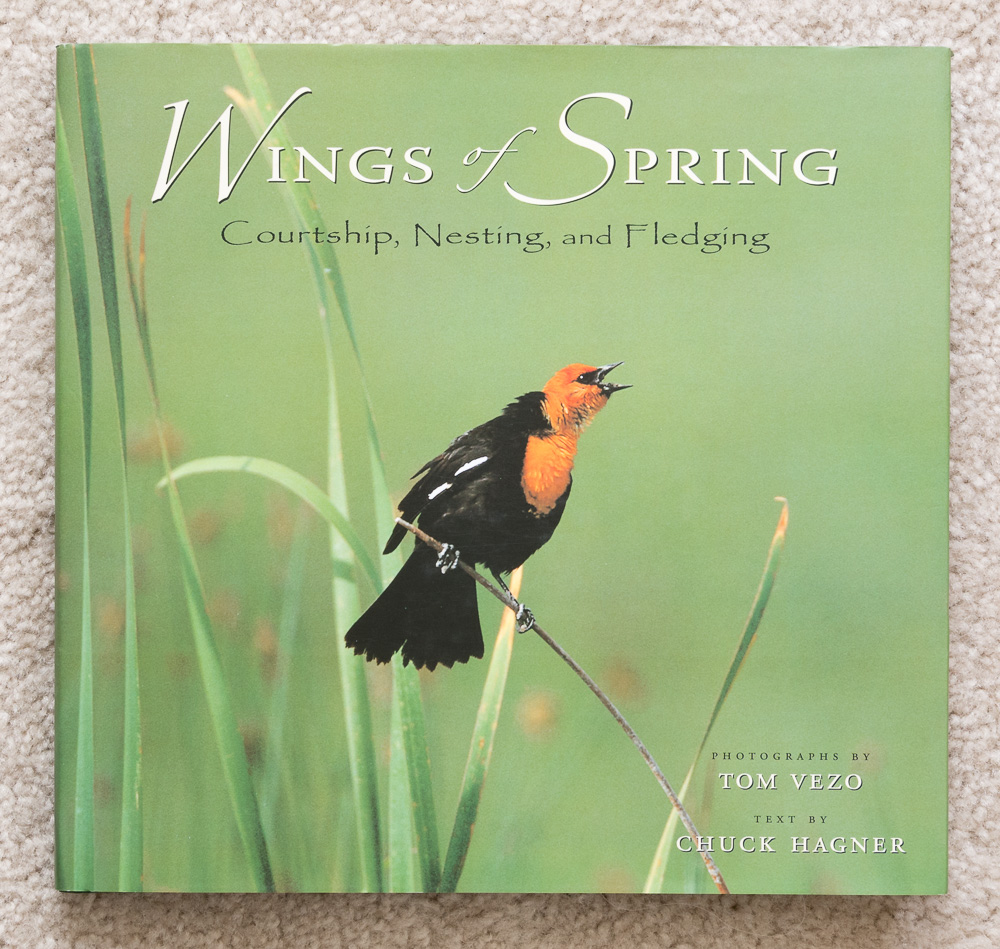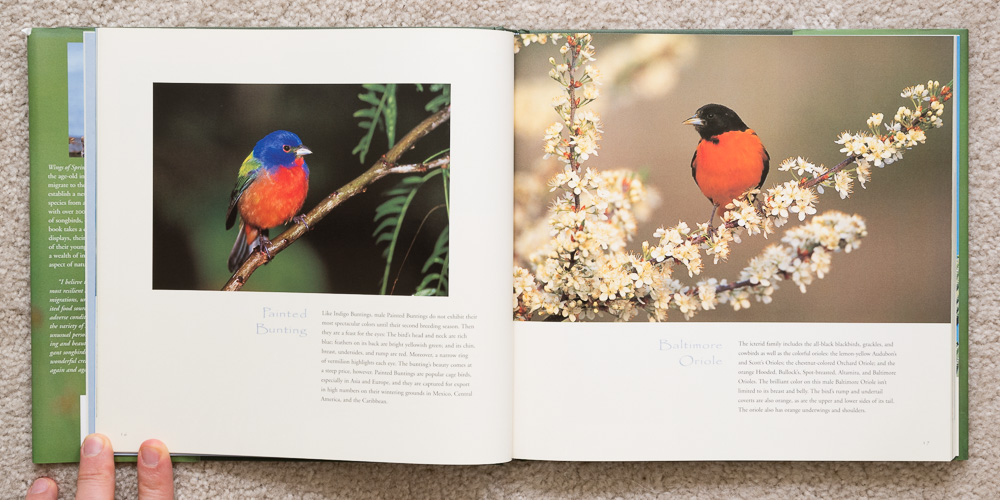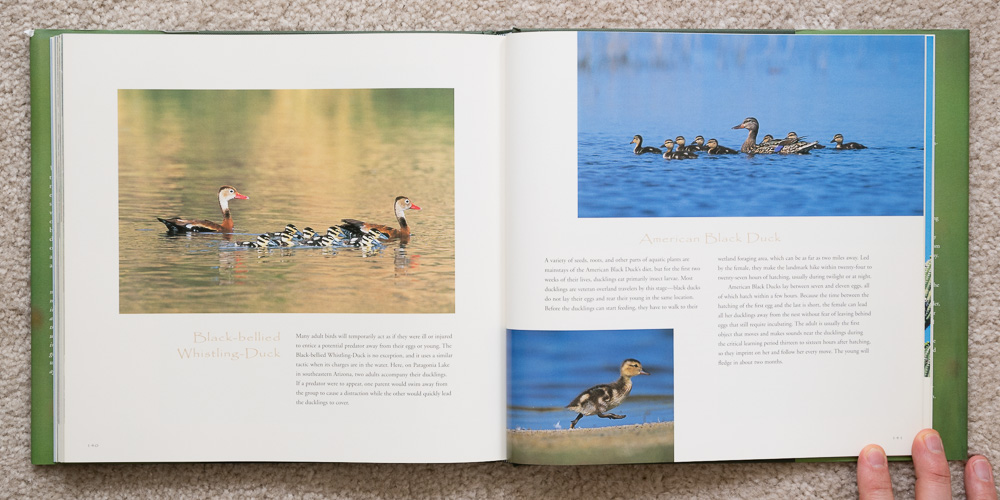This post contains affiliate links and I will be compensated if you make a purchase after clicking on my links. This is at no extra cost to you.
Spring is a wonderful time to be a bird lover. This is often the time of year when birds look their best, when their colors are brightest, their feathers most spectacular. It is a time of such spectacular behavior, watching courtship displays, observing birds building nests, watching young grow, fledge, and leave the nest. Wings of Spring: Courtship, Nesting, and Fledging, is a celebration of birds in spring, bringing us into their world and showing some of the beauty and magic we can find there.
The book is organized into 4 major sections: Territory, Nesting, Nurturing, and Growing. Each section is full of beautiful photographs by Tom Vezo of many different species of birds from all over the world. Each photograph is accompanied by a paragraph written by Chuck Hagner describing details about the the species.
Territory
Many bird species migrate during the spring, moving from their wintering grounds to the place they will rear the next generation. Many species have particularly bright and vibrant plumage during this season, all the better to attract a mate. In the sample photo from this section we see a Painted Bunting on the left and a Baltimore Oriole on the right, both very colorful birds.
Nesting
Once birds establish their breeding territory they have to find a nesting location and build a nest. There are almost as many different ways of nesting as there are species of birds, from tree-top nests of twigs and grass to nests of mud built on a building or cliff. The example here shows a Burrowing Owl at the entrance to its burrow, and a grouping of nests built by Cliff Swallows. According to the text Cliff Swallows often lay eggs in the nests of their neighbors, or move eggs from nest to nest.
Nurturing
After their eggs hatch most young birds require some level of nurturing from their parents in order to grow enough to survive on their own. Some chicks are completely dependent on their parents, whereas others are more quickly able to move about on their own. In this sample photo we see three different species, the Great Kiskadee with a small lizard in its beak, a Broad-billed Hummingbird feeding chicks in the nest, and a couple photos of Eastern Bluebirds.
Growing
A young bird has a lot of growing to do. Many look very different when young than they will as adults. Most will eventually learn to fly, but need to first eat enough to gain the strength required to lift themselves from the ground or water. Some must learn to swim. In the sample photo here we see a family of Black-bellied Whistling-Ducks on the left and American Black Ducks on the right.
I very much enjoyed this book. The photography is beautiful, and the text is full of interesting facts, many of which I’d been unfamiliar with. This is not a field guide, nor is it strictly a photography book. Instead it is a book for those who love birds, who always look forward to spring, and who long to get back outside to watch (and perhaps photograph) the amazing colors, behaviors, and beauty of the Wings of Spring.
Do you enjoy these posts?
Sign up to receive periodic emails with updates and thoughts. Don’t worry, I won’t spam you. And please consider purchasing artwork or products from my online store, and using my affiliate links in the sidebar to the right when shopping online.
I appreciate your support!
































